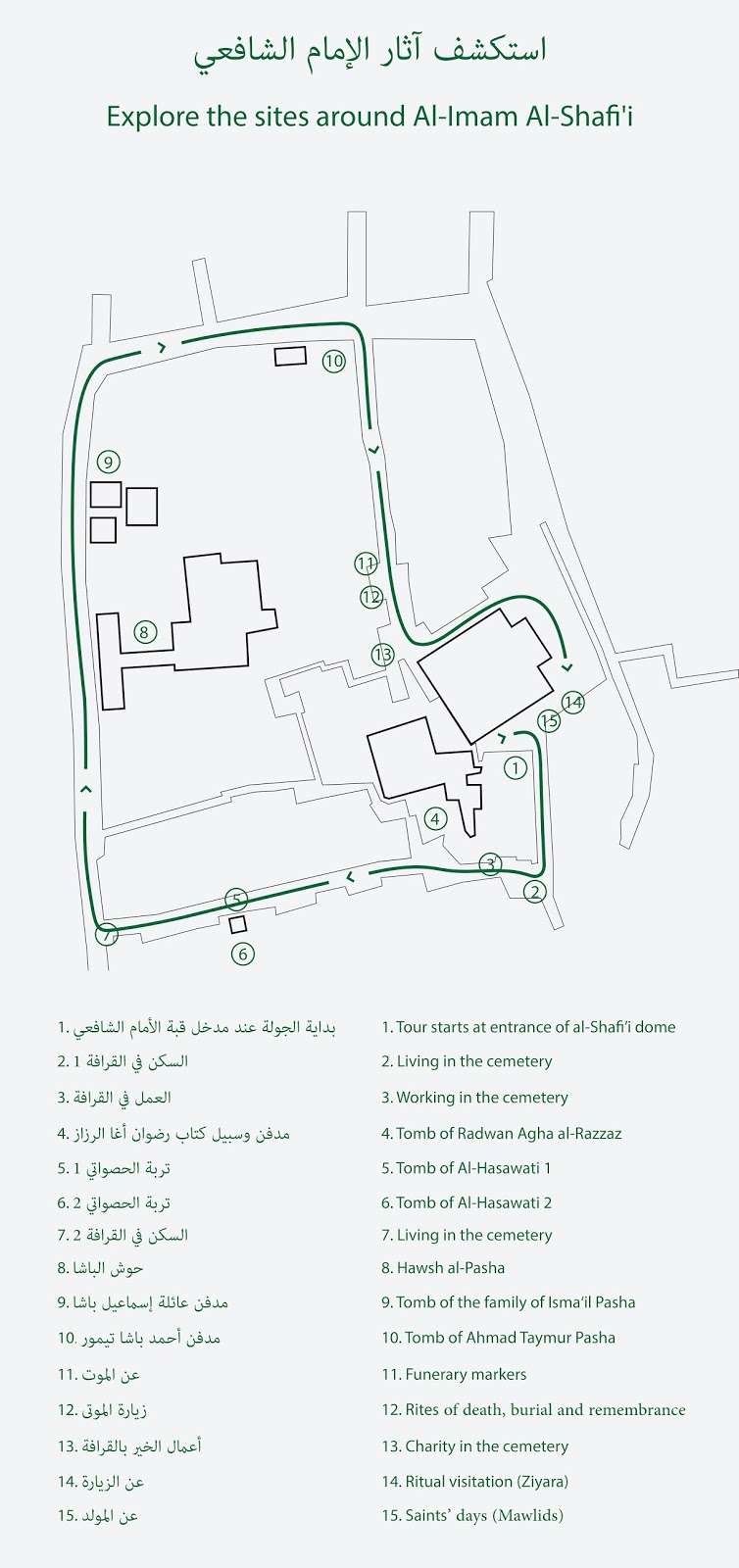السكن في القرافة 2 / Living in the cemetery 2
سكان القرافة اليوم
يذكر التاريخ أن عادة سكن المصريين بالقرافة ترجع للقرن الثاني هـ التاسع م. بعضهم درس بمؤسساتها التعليمية والخيرية الملحقة بالترب والآخر عمل بها، كما عمل الآخرون في حفر القبور وحراستها، بينما اعتكف البعض في القرافة سعيا وراء العزلة، وسكنها الآخرون لاستفادة من الزكاة والحسنات والنفحات التي كانت توزع هناك دورياً
يعتبر التربية خلفاء سكان القرافة القدامى. فهم المسئولون عن حراستها والحافظون لتاريخها من خلال الذاكرة الجمعية التي تسجل جميع المعلومات بخصوص الترب والأحواش. التربية يرممون المقابروالترب ويدفنون الموتى، ويحرسون المنطقة التابعة لهم كما يعمل معهم مساعدون يعيش بعضهم في الاستراحات التي أنشأها ملاك الترب للبيات الليلي أثناء الزيارة، وقد تعين بعض العائلات حراسا مقيمين، كما يعيش الكثير من سكان القرافة في عمارات سكنية بشياخات داخل حدود القرافة.
يسمح القانون لعائلات التربية بالسكن داخل القرافة ويحق لهم بناء المساكن ذات العناوين الشبيهة بنظام العناوين داخل المدينة والتي تشمل رقم العقار واسم الشارع. أما الأحواش والترب فتأخذ رقم مسلسل يحتوي على رقم المنطقة ورقم العين. عند انتقالكم للشارع المواجه ستجدون مثال على بيت بعنوان وأمثلة على ارقام الأحواش.
يسمح القانون لعائلات التربية بالسكن داخل القرافة ويحق لهم بناء المساكن ذات العناوين الشبيهة بنظام العناوين داخل المدينة والتي تشمل رقم العقار واسم الشارع. أما الأحواش والترب فتأخذ رقم مسلسل يحتوي على رقم المنطقة ورقم العين. عند انتقالكم للشارع المواجه ستجدون مثال على بيت بعنوان وأمثلة على ارقام الأحواش.
هل تستطيع معرفة اسم الشارع ورقم المنطقة؟
Cemetery residents today
Egyptians are recorded to have lived in al-Qarafa since the 2nd/9th century. Some as scholars and employees of the charitable and educational establishments attached to tombs, others as gravediggers and others as ascetics and beneficiaries of charity. The turabiyya are their descendants. They are the cemetery’s caretakers and its memory: the keepers of information concerning its tombs and graveyards. The turabiyya are licensed to repair graves and tombs, bury the dead and guard the graveyards within area under their charge. They hire assistants, some of which live in the rest-houses built by families to accommodate overnight stay during visitation. Some families hire their own live-in guards. Other cemetery dwellers live in residential pockets such as the one overlooking al-Imam al-Shafi’i Square.
Turabiyya are legally permitted to live in the cemetery and build homes with addresses indicating street name and number, unlike the graveyards and tombs which are identified by unit and area number. When you leave this street can you find one example of an address and another example of a graveyard number.
Turabiyya are legally permitted to live in the cemetery and build homes with addresses indicating street name and number, unlike the graveyards and tombs which are identified by unit and area number. When you leave this street can you find one example of an address and another example of a graveyard number.
Can you figure out the name of the street facing you and the cemetery area number?

